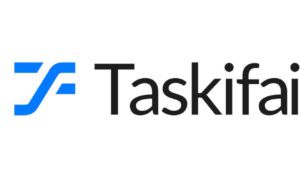Image by Ichigo121212 from Pixabay
Did you know that America hosts the highest prison population globally, with approximately two million people incarcerated in 2016? While the US prison system is complex, it combines private and public correctional facilities. If your loved one is imprisoned, and you find their details in the lookup inmate portal, you may wonder whether the facility is private or public. Read on to learn the difference between private and public prisons -ownership, transparency, types of inmates held, security level, cost, and concerns.
Pros and Cons of Private Prisons
Pros
- They offer employment opportunities for communities
- Privatizing prisons goes a long way to lower overpopulation, making prisons safer for offenders and employees
- Offer innovative programs like drug treatment to decrease reimprisonment rates.
- Contribute to the economy through taxes
Cons
- They are costly since the most expensive inmates are left in public prisons
- They profit from incarceration, thus raising ethical issues.
Pros and Cons of Public Prisons
Pros
- Allow the government to fulfill its constitutional mandate of imprisoning felons
- Facilitate the rehabilitation and reformation of offenders
- Exhibit greater accountability in operations and finances
Cons
- Expensive to operate
- Evoke issues of poor prison conditions like overcrowding and violence
Differences Between Private and Public Prisons
Ownership and Operation
The local, state and federal governments run public prisons and use tax dollars to cater to their expenditure. However, it may outsource some of the prison’s functions to third parties to increase efficiency and reduce costs. For instance, the government may outsource food services and maintenance. The government retains control of the prisoners, their terms, and any early releases.
On the other hand, private enterprises operate private prisons and absorb their responsibilities and running costs. Like any other business, these private companies make a profit when running the prison. They also generate revenue by having the prisoners make products that are later sold to the public. However, private prisons are not independent of the government; the government provides the prisoners and caters to the offenders’ daily expenses.
Type of Inmate Housed
Private prisons only hold 8% of the US prison population, culminating in around 116,000 people. Since these institutions have their standards, they have the freedom to choose the type of offender they house. Private prisons opt for non-violent offenders and forgo violent ones, as well as those with mental health issues and medical conditions, as they are costlier to hold. Also, they prefer prisoners with longer sentences because they are more economical.
Security Level
The type of inmates housed determines the security level for the specific prison. Since private prisons hold fewer violent offenders, they have lower security systems. Unfortunately, poor security in these prisons has led to more violence than in public institutions.
One survey revealed that private prisons report 49% more guard assaults and violent incidents than public ones. Additionally, assaults among prisoners are 65% more in private than in public jails. The increased violence in private facilities can be attributed to the minimal security making defendants more violent. Contrarily, public prisons have high levels of security because they host more violent prisoners.
Transparency
Public facilities have greater transparency compared to private ones. They must be transparent and accountable because they use taxes. These prisons must publicize crucial information, such as the number of inmates and allocation of funds, to offer insights into how they use taxpayers’ money.
Private facilities are not obligated to explain how and where their budget is used, since they are private entities. This jeopardizes the transparency and accountability of these prisons significantly.
Cost
Among the main reasons for privatizing prisons is to save money, thus lowering the burden on American taxpayers. Research shows that private facilities save the government $10,000 per inmate annually. While this strategy saves money for the government, it maximizes profits for the private entity.
Rehabilitation Programs
Every correctional facility offers different rehabilitation services for inmates. Drug treatment is increasingly important, with a considerable portion of inmates having drug abuse problems. According to recent studies, more private prison inmates –28% attend drug treatment programs than public sector ones -14%.
Solitary treatment is both a form of punishment and a safety measure. It can be used for disciplinary segregation and to keep other inmates safe. The law requires public prisons to report the number of inmates under solitary confinement -67,442 in 2015. However, private facilities do not report this information, making it difficult to compare the use and efficiency of this method in the two systems.
Concerns
Both private and public prisons undergo scrutiny to establish which system operates better. Private prisons are criticized for high staff turnover rates and reduced security, increasing escape rates. Also, people question private facilities’ morality since they incentivize imprisonment. Similarly, public prisons are critiqued for overcrowding, poor maintenance, and understaffing.
The US leads the world with the largest number of prisoners housed in private and public incarceration facilities. The chief difference between the two types of prisons is ownership and management. While the government owns and funds private facilities, private for-profit organizations operate private prisons. Both private and public prisons play a crucial role in reforming inmates and ensuring the public good.


































